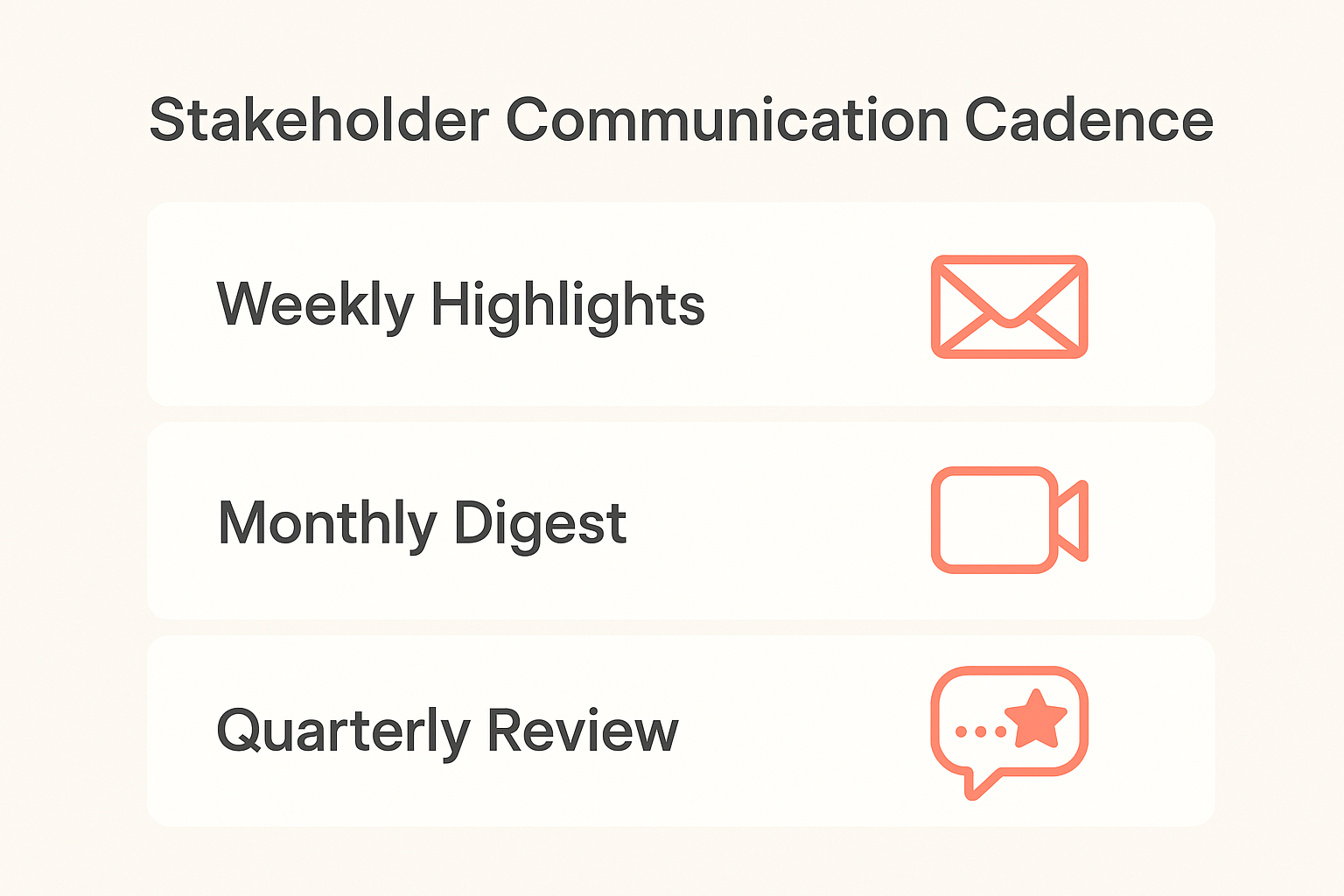# The quiet edge of great execution
Projects rarely fail on code or Gantt charts. They fail in conversations. Effective stakeholder management, done with care and consistency, turns friction into progress. The craft is simple, not easy: map who matters, align interests, communicate like adults, set expectations, and build trust over time.
# Why stakeholder management matters
Strong stakeholder engagement cuts delays, reduces resistance, and improves decisions. Research on leadership backs it up, including McKinsey’s work on how CEOs build lasting stakeholder relationships that influence performance almost a third of earnings. See the analysis on how the best CEOs build lasting stakeholder relationships from McKinsey.
Stakeholders are people, not variables. Principles from APM highlight that humans do not always behave predictably, so judgment and empathy are non negotiable. Routines help, but relationships carry the work.
# 1) Identify and analyze stakeholders with precision
Start wide, then prioritize. Build a living stakeholder register that logs roles, influence, interest, impact, stance, and preferred channels. Use a power interest grid to focus effort where it counts.
- High power, high interest: manage closely, invite early, share trade offs.
- High power, low interest: keep satisfied with concise updates.
- Low power, high interest: keep informed, recruit as advocates.
- Low power, low interest: monitor lightly, avoid noise.
Practical moves:
- Run a 60 minute cross functional sweep, list internal and external groups.
- Tag each contact with influence and interest, refresh monthly.
- Record one sentence “what they really care about” next to each name.

For deeper mapping, consider salience (power, legitimacy, urgency) and relationship networks. Good maps surface politics early and prevent surprises later. For a clear overview of best practices, review Simply Stakeholders’ guide to stakeholder engagement best practices.
# 2) Align interests with project goals
Alignment is not selling. It starts with understanding motivations behind positions. Ask what success looks like for each group, then connect outcomes to their interests.
Example: in a platform migration, executives want clear ROI, managers want reliable tooling, frontline teams want fewer clicks. Write value statements for each, then design rollouts that respect all three.
When interests conflict, be transparent about trade offs and where input is truly open. Invite co creation sessions to design “good enough for all” solutions. You will not get perfect consensus, you can get durable commitment.
Helpful references: APM’s key principles of engagement clarify how to balance flexibility with clarity, and this overview of common project failures from ILX shows how missing alignment costs time and money.
# 3) Communicate like you mean it
One way broadcasts create distance. Two way communication builds trust. Set a clear cadence, pick channels on purpose, and tailor messages to audience.
Baseline cadence that works:
- Weekly highlights for core stakeholders: what shipped, risks, next week.
- Monthly digest for broader groups: progress, wins, changes.
- Quarterly review for execs: value, metrics, decisions needed.
- Real time alerts for critical incidents.

Channel fit:
- Complex or sensitive topics: live conversation first, notes after.
- Detailed specs: written docs that can be reviewed async.
- Urgent change: call or message, then confirm in writing.
Quality bar:
- Lead with why, then what, then impact.
- Remove jargon, use numbers, link to the source.
- Ask for feedback and make it easy to respond.
# 4) Manage expectations proactively
Unstated expectations break projects. Surface them early, then agree on measures of success.
Do this:
- Write explicit “in scope, out of scope” in one page.
- Define 3 to 5 success metrics, for example, adoption rate after 30 days, incident reduction by 20 percent, stakeholder response time under 48 hours.
- Publish response time SLAs by channel, then meet them.
- Log change decisions and the rationale, share within 24 hours.
When reality shifts, tell people early. Explain what changed, why it changed, and the impact on dates, scope, or quality. Clear beats perfect.
# 5) Build relationships that last beyond the project
Trust compounds, then carries you through rough patches. It comes from consistent behavior: do what you say, tell the truth, and show care for stakeholder outcomes.
Small habits that scale:
- Begin key meetings with two minutes of context and intent.
- Reflect back what you heard before proposing solutions.
- Close loops, even on small asks, within the promised window.
- Recognize contributions in public forums, not just in DMs.
A short story: during a finance rollout, we set office hours twice a week. One VP showed up at 7 30 am with three sharp objections. We solved two on the spot and logged the third for a decision by Friday. She became our strongest sponsor. Not magic, just follow through.
# Leverage tools, keep the human in the loop
Technology helps when it centralizes context, tracks commitments, and surfaces signals.
What to look for:
- A single register for stakeholders and interaction history.
- Mapping views for influence versus interest, plus relationships.
- Sentiment and topic analysis on feedback streams.
- Workflow reminders for outreach and follow ups.
If you collect a lot of input, AI can speed analysis. Use it to categorize themes and flag risk, then apply human judgment for decisions. For product teams, see how AI assisted analysis of customer feedback works in practice with Sleekplan’s Intelligence module: Sleekplan Intelligence (opens new window).
# Common pitfalls to avoid
Patterns repeat. A few to watch:
- Missing stakeholders who can veto late in the game. Do a second pass with someone outside your team.
- Over communication with no signal. Curate updates, do not spam.
- Wishful timelines. Publish buffers and change logs.
- Ignoring resistance. Treat it as data about risk, not defiance.
- Tool worship. Software tracks the work, it does not replace the work.
For cautionary tales across industries, see ILX’s roundup of failed project examples.
# Quick checklist you can run this week
- Create or refresh your stakeholder register, tag influence and interest.
- Draft a one page comms plan: audiences, messages, cadence, channels.
- Write down success criteria and baseline metrics with owners.
- Schedule two stakeholder interviews to uncover hidden expectations.
- Log every meeting within 24 hours, include decisions and next steps.
# FAQ on stakeholder management
- What is a stakeholder management plan? A simple document that lists stakeholders, priorities, engagement tactics, cadence, owners, and metrics.
- How do I prioritize stakeholders? Use a power interest grid, then validate with your sponsor. Recheck monthly.
- What cadence works best? Weekly for core, monthly for broad, quarterly for execs, real time for incidents.
- How do I handle conflict? Listen first, clarify interests, surface trade offs, then co design options. Document agreements.
# Sources worth bookmarking
- A practical overview of best practices: Simply Stakeholders’ stakeholder engagement best practices.
- Principles that respect the human side: APM’s key principles of stakeholder engagement.
- Leadership and performance angle: McKinsey on building lasting stakeholder relationships.
Clear decisions, clean communication, and steady relationships turn complex work into progress. The details add up.